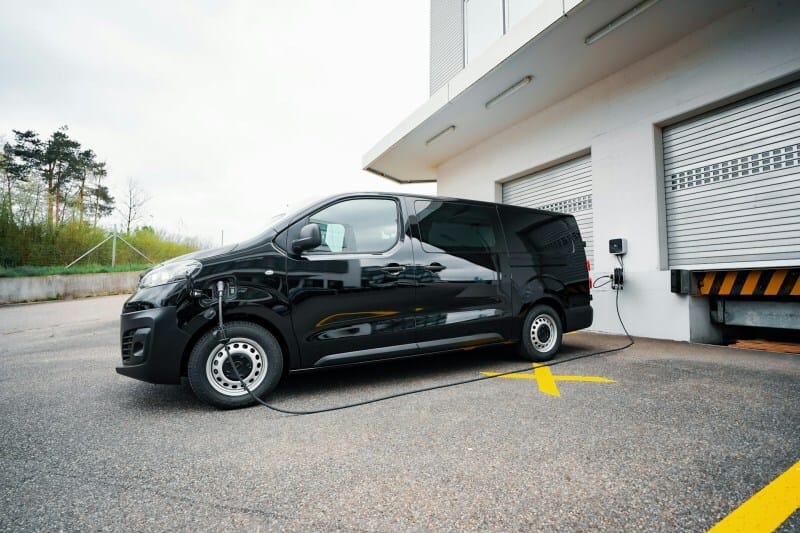____________________________________________________________________________
Reducing emissions is a big deal as it can lower the amount of greenhouse gases, which will help combat climate change.
For fleet owners, making your fleet greener should be a priority. That is because the transportation sector is the leading cause of U.S. greenhouse gas (GHG) emissions attributed to human activity. In 2022, the sector accounted for 28% of total GHG in the U.S.
So, how do you go green without completely flipping your operations upside down? There are several ways, and we’ll discuss some of them here.

#1 Switch Gas Guzzlers for Electric Vehicles
Vehicles that run on gas are expensive to fuel and maintain, and they pump out a ton of emissions.
Diesel vehicles, besides petrol, are the leading cause of greenhouse gas emissions within the transportation sector. They release an average of 4.4 tons of CO2 annually.
The solution? Electric vehicles. Vehicles that use electric motors instead of internal combustion engines cut out tailpipe emissions completely. No tailpipe, no emissions—just smooth, quiet driving and lower fuel costs.
The upfront cost surely is higher. But you can take advantage of tax incentives that shave off thousands of an electric vehicle’s (EV) price tag. For new EVs, the federal tax credit offers up to $7,500 and $4,000 for used vehicles.
Don’t swap out your entire fleet overnight, however. Start small—maybe replace your most-used local delivery trucks with electric alternatives or city routes where charging is easy.

#2 Use Dynamic Routing to Optimize Routes
Do you know how much excessive idling costs businesses? Approximately $12,000 per fleet truck per year. A truck’s fuel efficiency drops by 1% for each 10% of time spent idling. That’s a lot of resources—gas and money—wasted.
Instead of following the same old GPS directions, or worse, driver intuition, use dynamic routing.
It’s a system that uses real-time data like traffic conditions and weather to continuously adjust delivery routes on the fly, optimize efficiency, and minimize delays. That means less sitting in traffic, fewer unnecessary miles, and way less idling.
Dynamic routing also helps you save a lot of money. How? Effective route planning limits fuel use, which lowers operational costs.
Another advantage? It allows you to provide exceptional customer service. You can promise your customers on-time deliveries within their specified windows based on their requirements.

#3 Explore Alternative Fuels
Not quite ready to go fully electric? No problem. You can cut emissions by switching to alternative fuels like biodiesel and hydrogen. These can significantly reduce your fleet’s carbon footprint.
Biodiesel, for example, is made from renewable sources like vegetable oil or animal fat. It can be used in existing diesel engines with little to no modifications.
A new study has found that biodiesel can reduce vehicle pollutants by more than 90%.
Green hydrogen is another promising option. This clean energy source only releases water vapor and leaves no residue in the air, unlike oil and coal. Using green hydrogen in trucks can significantly reduce emissions of harmful substances.
Storage has been a hindrance in adopting hydrogen, however. Several hydrogen storage companies are working to solve the issue and advance the field with alternative storage methods based on solid-state materials such as metal-organic frameworks (MOFs).
These nanomaterials, MOFs, attract and trap hydrogen molecules in their nanoscale pores, which allows for efficient storage and release. This adsorbent material’s high storage efficiency makes it possible to store the same amount of hydrogen as a 700-bar tank but at reduced pressure, says H2MOF. That means safer, more compact storage and an easier path to hydrogen adoption.

#4 Use Telematics to Monitor Driver Habits
Harsh braking, rapid acceleration, and excessive idling waste a ton of fuel.
Telematics systems can track all that and help you train drivers to be smoother and less wasteful behind the wheel.
This technology will give you real-time data on driver behavior, fuel usage, and vehicle performance. Why does this matter? Because aggressive driving burns way more fuel, leading to higher emissions and extra costs.
The Extra Mile reports that driving aggressively can reduce your gas mileage by as much as 30% when driving on a highway.
Use telematics and you will be able to spot problem areas and coach drivers on smoother, more efficient driving techniques. That is, gentler acceleration, steady speeds, and less unnecessary idling—all of which reduce emissions and save money.
Going green with your fleet is all about taking smart, practical steps.
Whether you’re swapping gas guzzlers for EVs, optimizing routes with dynamic routing, or exploring alternative fuels like hydrogen, every move makes a difference. Besides the planet, these strategies will help save money, improve efficiency, and stay ahead of industry regulations.
So, start where you can, test what works, and you will build a greener, more efficient fleet.
The post Green Strategies to Reduce Fleet Emissions appeared first on Moss and Fog.
